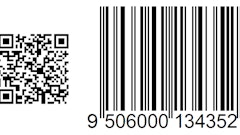
Local, state, national and multi-national jurisdictions around the globe continue to enact new regulations for how goods are packaged for shipping. For e-commerce companies, maintaining compliance with the growing list of standards is an important, and ongoing, challenge. Ensuring the safe transport of goods, hazardous or not, is critical for adherence to regulatory requirements. The safe handling of packages requires a focus on labeling requirements, testing of packaging design for intended use cases, and taking a forward-looking approach to sustainability.
For example, companies that ship products with embedded or standalone lithium-ion batteries (LiBs) are required to meet regulatory labeling requirements to ensure the safe transport of these goods. Safely shipping these items means that packages should indicate the type of batteries being shipped, whether they are being shipped alone or as part of a package of multiple items.
Lithium-ion batteries fall under Hazmat Class 9 within the dangerous goods system, which assesses substances and materials based on their potential risks during transportation. Hazmat Class 9 covers miscellaneous hazardous materials, including items prone to overheating and flammability. These classifications provide a framework for shippers to identify and handle LiBs properly, ensuring compliance with safety regulations and preventing accidents during transportation.
Battery certification is one blind spot in the packaging industry right now. In order to ensure that shippers are properly labeling and handling packages containing LiBs obtaining a certification to do so, or working with partners who have secured this certification, can ensure adherence to legal requirements. In addition, technological advancements like integrated full-color printing for erected or flat boxes can streamline this labeling process within the packaging workflow, making the process itself a part of the compliance solution.
Beyond batteries, the International Safe Transit Association (ISTA) has developed testing standards for packaging to assess the security of goods during shipping. The organization tests a wide range of packaging for products such as glassware, household and premium items, medical devices, ready-to-assemble furniture, apparel and other furnishings. Packaging undergoes rigorous testing to ensure that goods will arrive at their destination safely and intact, while also ensuring that those transporting the products remain safe. Designed to mimic real-life conditions that arise during shipping, vibration, temperature, drop and impact testing assess the likelihood of goods being damaged during transit.
These tests and certifications are critical to the safe transportation of products. Preventing damage to the package itself means preventing damage to the goods inside. When those goods contain potentially hazardous items or materials, this testing becomes essential. Once testing is complete, packaging providers can receive the ISTA Transit Tested Certification Mark. This certification boosts confidence for packaging providers, e-commerce companies and transportation companies alike.
There is more to packaging compliance than protecting goods being shipped and those transporting those goods. Protecting our environment is also a key consideration. Numerous requirements are coming to the market in the coming years with the intent of doing just that. In recent weeks, Minnesota became the fifth state to enact an extended producer responsibility (EPR) law for packaging. Under the new law, all packaging in Minnesota must be reusable, recyclable, compostable or collected by an approved alternative collection system by 2032. Minnesota joins Maine, Oregon, California and Colorado in adopting these measures.
In addition to state-level legislation, national and multinational regulatory reporting requirements for companies in the United States and European Union are also on the rise. In the United States, required reporting of Scope 3 emissions will impact e-commerce organizations as they ship goods across the country. Complying with these requirements will be made easier for companies who focus on minimizing waste in the packaging and shipping practices. In the European Union, pending rules also address the amount of empty space, known as void, in packages.
The environmental impact of packaging is enormous. By implementing automated right-sized packaging, companies can streamline their packaging processes, reduce waste and ensure that their packaging practices meet the stringent requirements set forth by regulatory bodies. This not only helps in maintaining compliance but also enhances overall operational efficiency and sustainability.
One of the biggest advantages of right-sized packaging is that it reduces waste. When packages are the correct size, less material is needed. This helps companies follow regulations that require them to minimize waste and promote recycling. By using fewer materials, companies also save money and resources.
Automated right-sized packaging systems can also integrate with advanced labeling technologies. These systems apply labels quickly and precisely, reducing the risk of errors. This integration helps companies meet regulatory requirements by ensuring that all necessary information is present and legible on each package, further aiding companies in their packaging compliance efforts.
As regulatory standards for packaging evolve, maintaining compliance is essential for e-commerce companies. Getting the right items in the right-size box with the right label matters a great deal, whether or not the shipment contains hazardous materials. By focusing on packaging, companies can realize network-wide benefits. Understanding labeling requirements, working with trusted partners to ensure the safety of goods as they are shipped and adopting a forward-looking sustainability strategy, e-commerce companies can ensure they are adhering to relevant law and regulations. Using right-sized packaging technology can help by integrating with labeling systems, ensuring products are shipped in appropriately sized packaging and reducing waste. This improvement helps companies comply with regulations, protect consumers and promote environmental sustainability.















![Pros To Know 2026 [color]](https://img.sdcexec.com/mindful/acbm/workspaces/default/uploads/2025/08/prostoknow-2026-color.mduFvhpgMk.png?ar=16%3A9&auto=format%2Ccompress&bg=fff&fill-color=fff&fit=fill&h=135&q=70&w=240)




